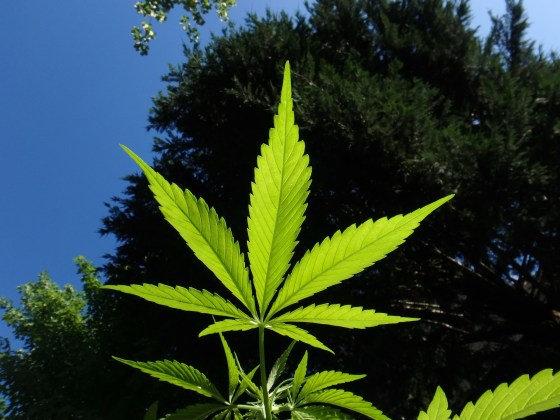I’m gonna be real here: Right now, sitting in front of my graveyard of Reese’s Cups wrappers in the corner of the Student Newsroom, I am painfully aware that I am a white, cis-presenting guy who’s about to try to share a list of tips about media diversity.
But if I took away anything from today’s panels with journalists who are worlds smarter than I am (shout outs to Nisha Chittal, Stephanie Clary, Trymaine Lee, Ryan Osborn, Dawn Ennis, Imaeyen Ibanga, Chip Mahaney and Tracie Powell) it’s this: Talking and listening to as many people as possible is necessary. Keeping in mind the context and potential impact of your stories 100 percent matters. And being transparent about what we do and being responsive when we screw things up is key.
So, after listening to some of today’s speakers and fellow panel attendees, here are some important takeaways for when you’re covering people of color, Muslims, LGBT folks and other traditionally underrepresented groups.
First off, do you only cover these communities when something’s going wrong? Inclusiveness in stories should be a concern all the time, not just when you’re covering topics of identity. One of the best things you can do is go out there and make real relationships with real communities — even if that’s done on your own time.
If you’re on the ground at a demonstration, take care not to cherry-pick details. Talk directly to the people your story affects, and talk to them with respect. Don’t let your story insinuate that a group is a monolith. Don’t allow your coverage to be complacent in the stereotyping of people or communities.
https://twitter.com/dannynett/status/776483234146242560
When the story is in, get input from other sets of eyes in the newsroom. This goes for the entire process, from doing your first edit to hitting send on the tweet. NBC’s NewsConnect is a good tool that helps buffer and figure out what doesn’t quite sound right before you hit publish. A Slack channel could also help here. (So could forcing three or four different Student Newsroom people to edit this.)
Loaded language always sneaks in — streaming and wtiness video helps rather than just accepting something like police data alone. #ONA16nbc
— Michelle Li (@MichelleLiTV) September 15, 2016
If (for some unforeseen reason) you don’t have a wildly inclusive rainbow of people in your newsroom, take the time to read up on marginalized communities. Political issues, social commentary, entertainment pieces — identities coverage shouldn’t be parachute journalism. The more you read about other communities and make real relationships with people, the more you’ll get a feel for nuances and how to talk about sensitive topics.
If you’d like an added layer of reference, there are great resources on how to be inclusive with your language. NABJ, AAJA, The Diversity Style Guide and GLAAD’s are just a few resources.
While we’re on the topic, think about why people from underrepresented communities might not be sticking around in your newsroom.
As Trymaine Lee said Thursday, “There’s hostility inside and outside the newsroom.”
There are microagressions in newsrooms. — @trymainelee People of color, LGBTQ face a different stress and need to address it. #ONA16nbc
— Michelle Li (@MichelleLiTV) September 15, 2016
Employers and editors need to be aware of the strain that comes with being a journalist of color or an LGBT writer — both from stresses of the job and from microaggressions within your office.
Checking in with your co-workers and offering mental health resources is key when they are constantly covering events like the Dallas and Pulse Nightclub shootings. Part of their job is to see and discuss violence targeting people who look like them — and that is really, really taxing.
Newsrooms don't do enough to create and nurture a healing culture for trauma, effects of trolling #ona16 #ona16nbc
— Jerilyn Forsythe (@jlforsyt) September 15, 2016
Even if you’ve followed all this advice, you might receive backlash for something you posted. Listen to it. Don’t make people afraid to speak up about something by writing them off as overly sensitive or easily offended. If I had a nickel for every time I’ve heard one of my peers called an “offended millennial,” I’d be able to pay off my student debt.
Listen to your audience when they say they're offended. Always check your own bias. – @sclary #ONA16nbc
— Michelle Li (@MichelleLiTV) September 15, 2016
It isn’t about what you did or didn’t intend to do with your coverage. We have to be aware of the context of these stories and identities — and the impact our coverage has on underrepresented communities and how they’re perceived.
So if you mess something up, the best thing you can do is be transparent. Editor’s notes are your friend. Respond on social media to people who are upset with your story.
Identify who you are and acknowledge their concern. Explain why that choice was made for that headline — or why you didn’t include input from this person — and tell people what you’re doing to fix it. Inclusion will never improve in media if we don’t own up and learn from our mistakes.
So, if I missed a point, accidentally excluded someone or generally just royally effed up — one, I’m sorry. And two, let me know.
Tweet at me or leave a comment, and I’ll do my best fix it and keep doing better in the future.






